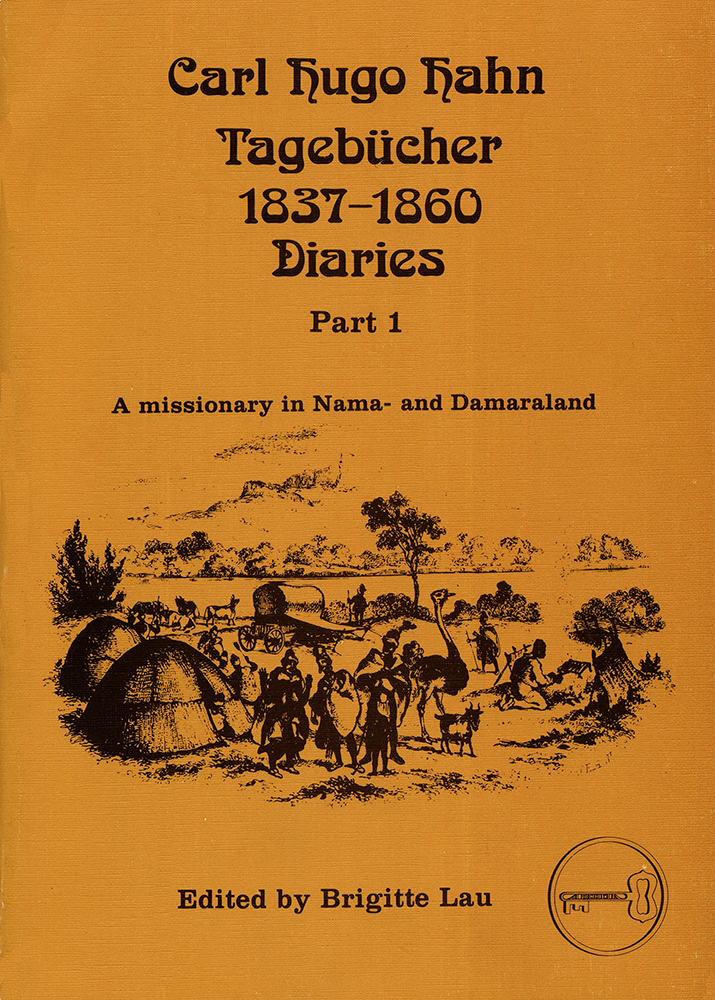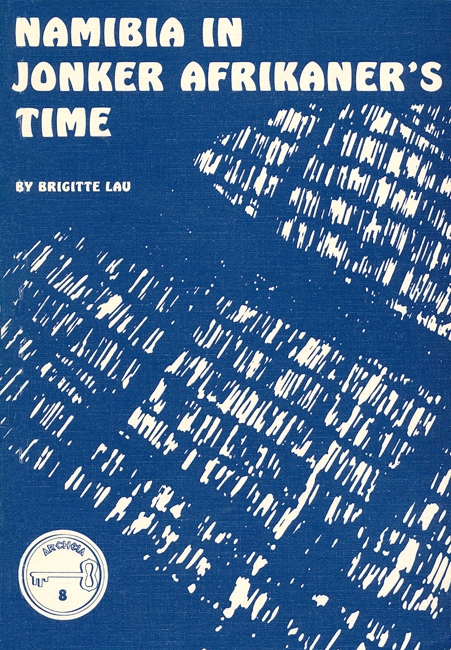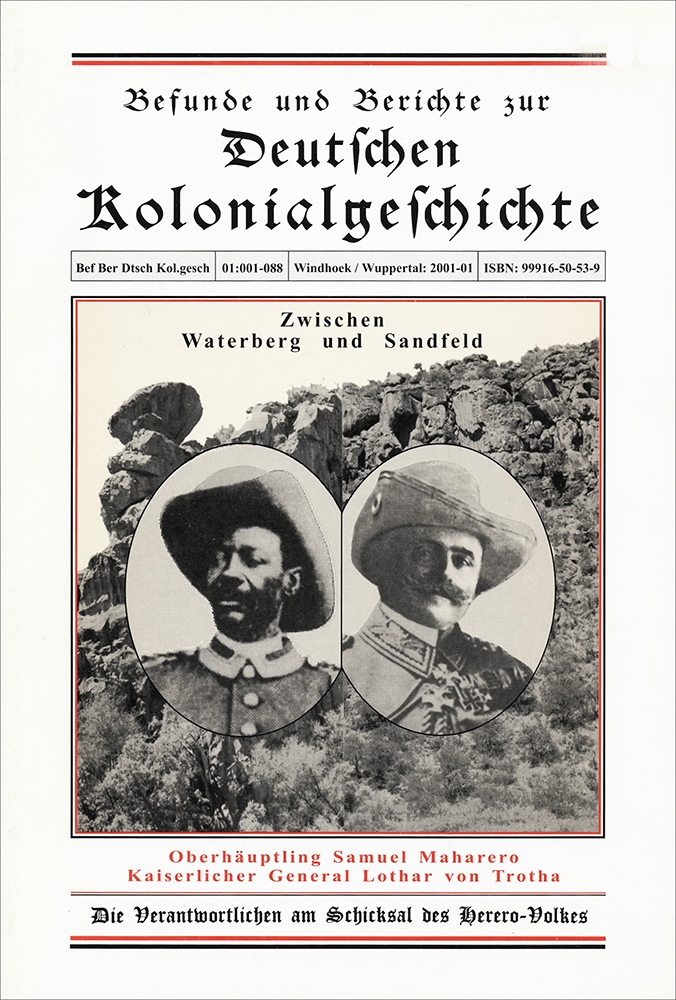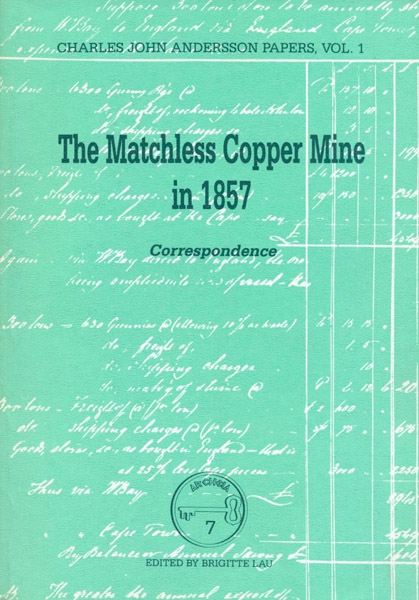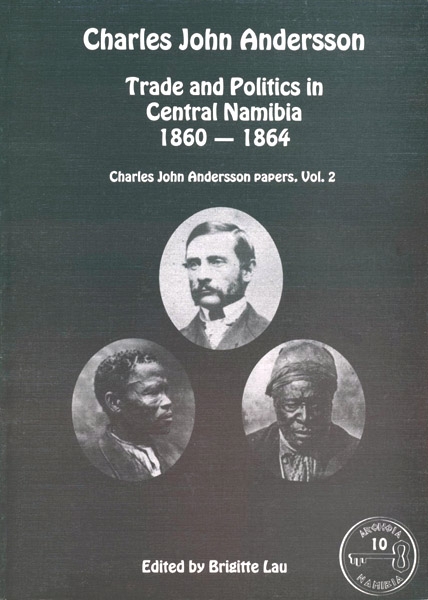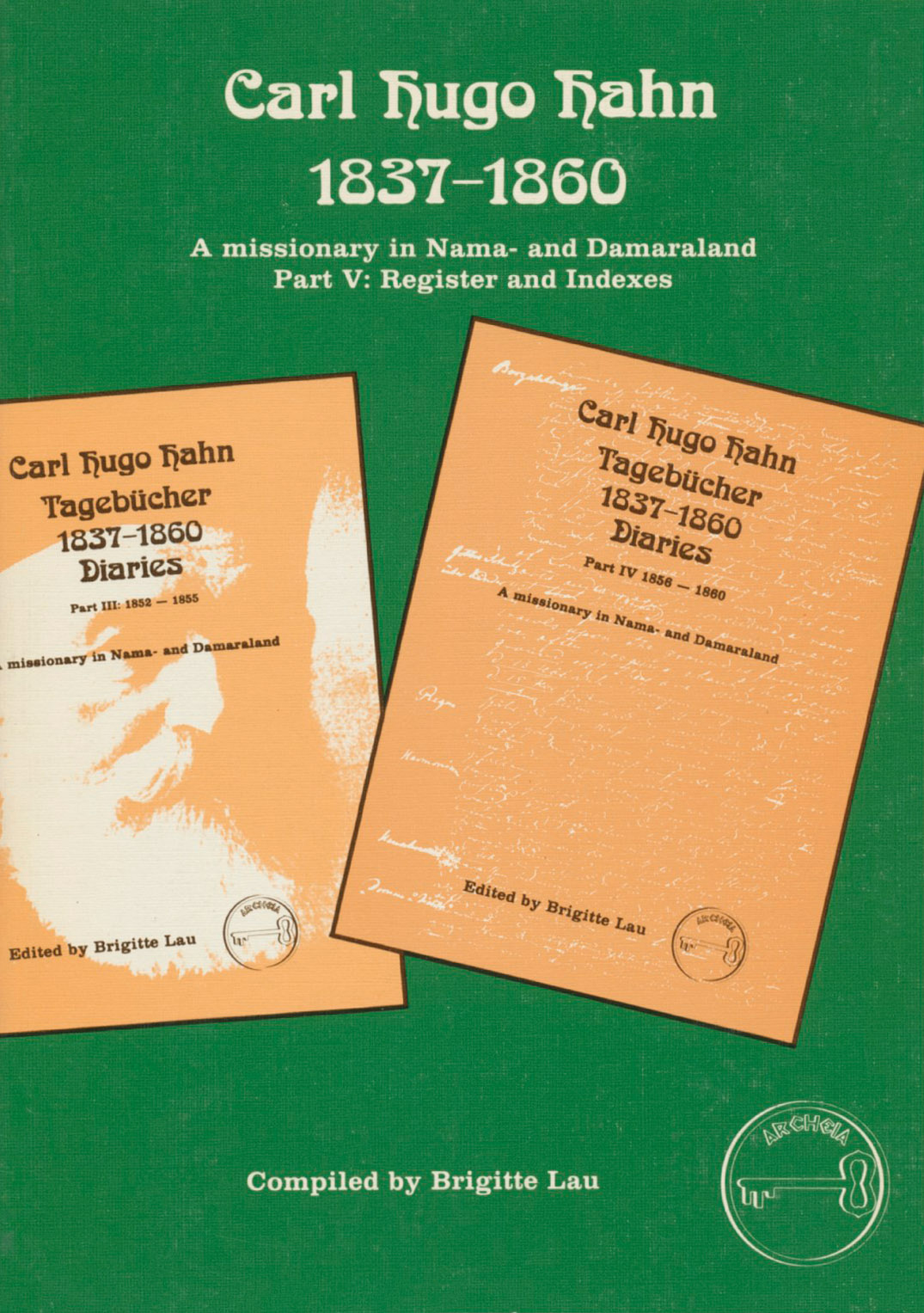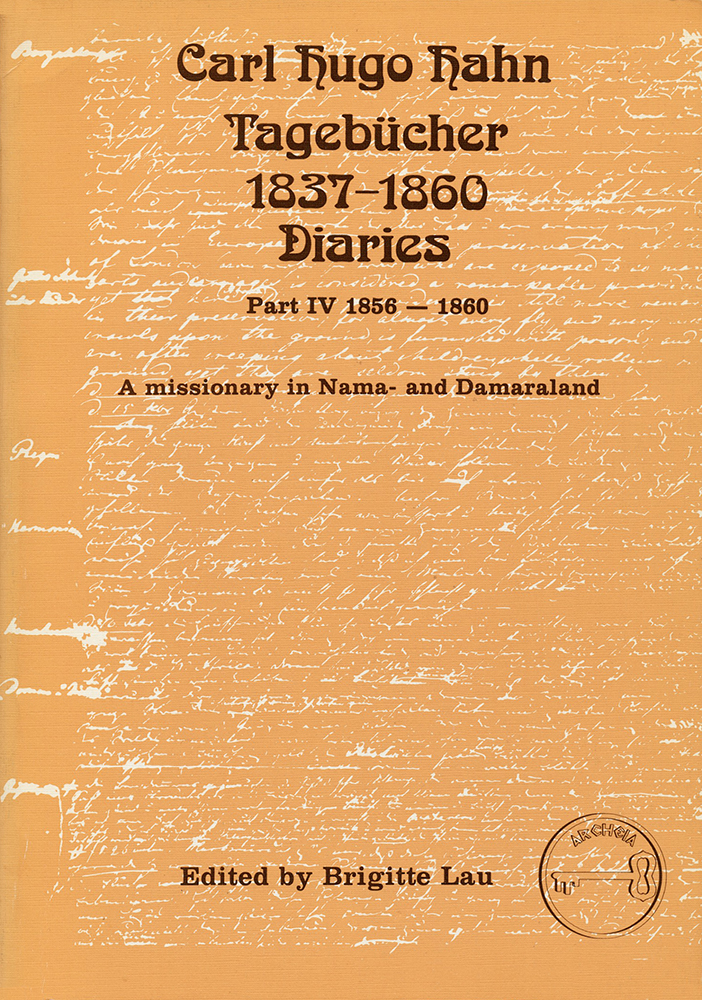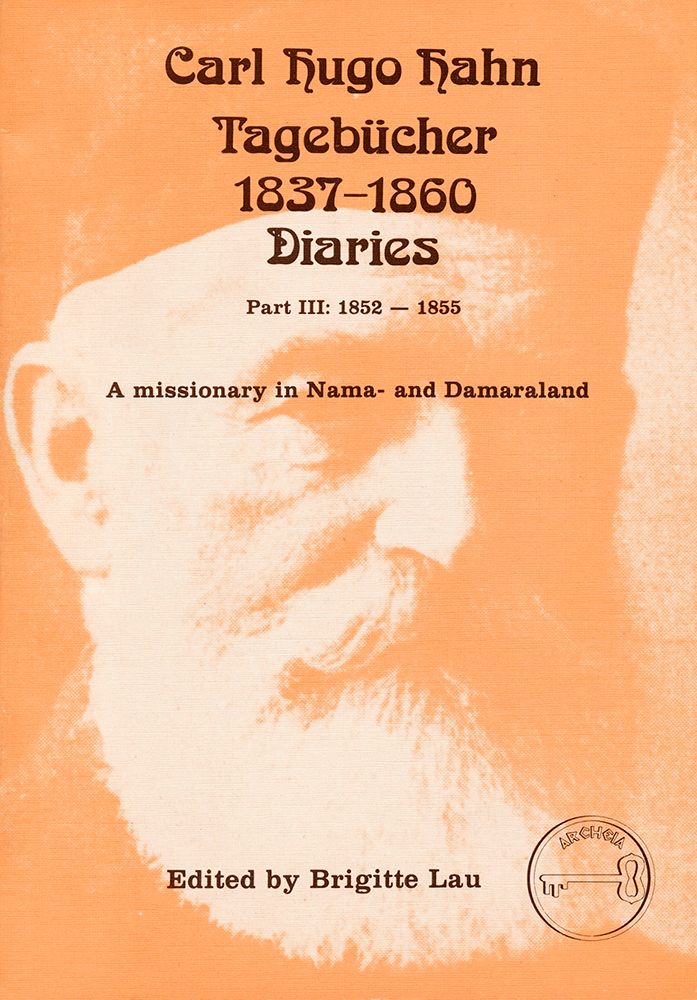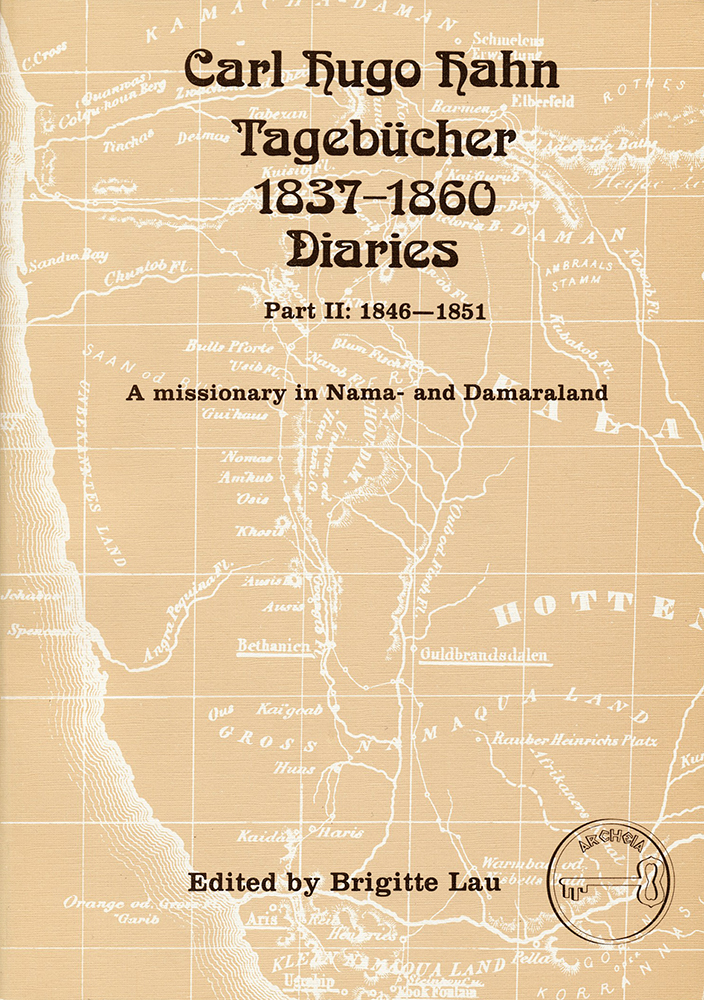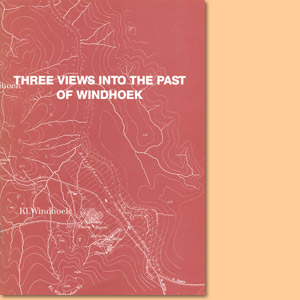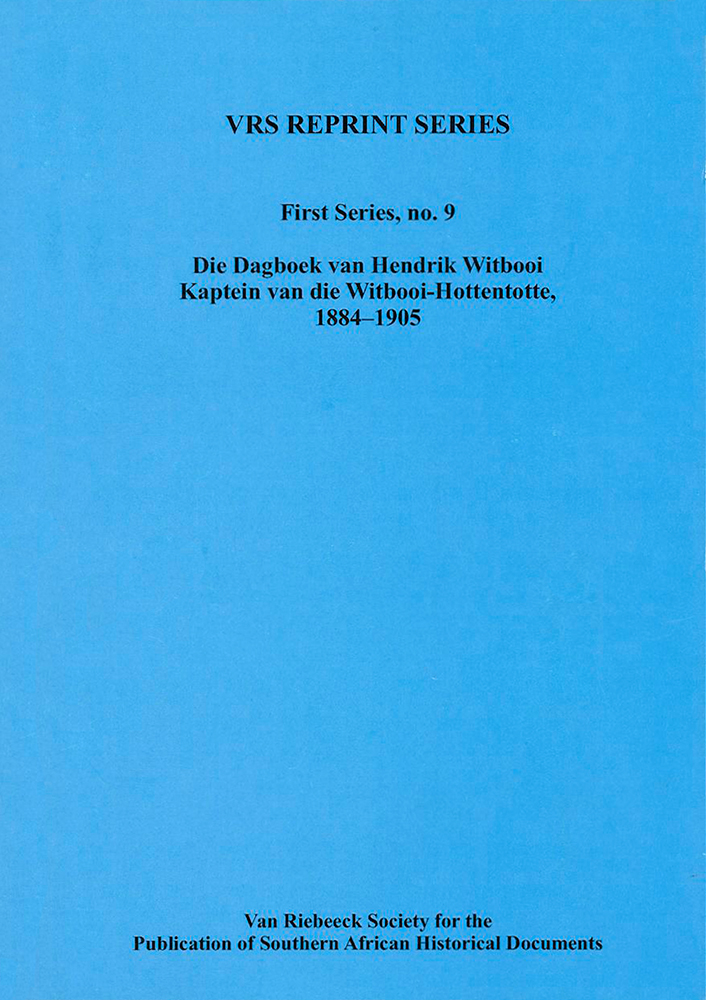The Hendrik Witbooi Papers, by Hendrik Witbooi, Brigitte Lau and Annemarie Heywood.
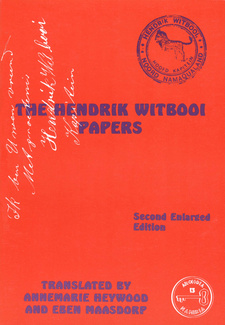
The Hendrik Witbooi Papers, by Hendrik Witbooi, Brigitte Lau and Annemarie Heywood. ISBN 9991644067 / ISBN 99916-44-06-7
The Hendrik Witbooi Papers are here presented in an English translation by Brigitte Lau and Annemarie Heywood, to make them accessible to a wide readership.
Early in 1893, 214 troops were sent to Namibia, and on 5 April 1893 Curt von Francois received communication that he could deploy them as he saw fit.54 With nearly 200 of them, von Francois set off and, without warning, attacked Witbooi's settlement at Hoornkrans on 12 April 1893. This notorious, brutal, and from a military point of view futile attack on a village in the early hours is best commented on by Witbooi himself in his papers.55 Von Francois subsequently found himself quite lost in a guerrilla war, disadvantaged because he was unaware of his situation, knowing neither the country nor bush war techniques. A cannon and a reinforcement of 130 troops, sent in July and August 1893, did not help him much: he is on record as having engaged in at least 20 indecisive skirmishes and encounters with the Witbooi between April 1893 and January 1894, during which Witbooi casualties have been estimated at 50 and German-Baster losses at 43.56 Von Francois' rigid and inappropriate approach can be gauged when considering that, after he realised his raid on Hoornkrans was not the military victory he had presumed it would be,57 he set off for Hoornkrans again, found it abandoned, burnt it down further, and stationed some troops there. Similarly, he and his troops spent the whole of December 1893 just searching for Witbooi, and when they found him, they placed their cannon on the nearest hill and tried to fire it into the village.58 It then took von Francois and his men seven full days just to work out in which direction Witbooi had moved away. The use of the cannon drove the Witbooi out of Hoornkrans and into the Naukluft mountains, but Witbooi was by no means subdued. Colonisation could not and did not proceed, and the Germans suffered heavy losses. Von Francois soon fell out of favour with his superiors, and in March 1894 was replaced by Major Theodor Leutwein, who brought another 30 troops with him. With Leutwein, colonisation of the country entered into a new phase. At this stage little else counted but to subdue Witbooi, because by now the Germans understood that otherwise no protectorate could be established. Within weeks of his arrival, Leutwein established a network of small military stations and posts throughout central and southern Namibia to ensure his supply lines; in one swoop he forced the Khauas and Simon Koper people into submission; demanded an additional 250 troops from Germany (ca. 450 in total having been sent so far); and, waiting for them, met with and decided on a two-month truce with Hen-drik Witbooi. The correspondence between these two in the intervening months, included in this edition as completely as possible, developed into a powerful, illuminating exchange on the nature of colonialism: the reader may judge for herself or himself. The Naukluft battles lasted from 27 August to 5 September; on 15 September, a treaty of conditional surrender was signed by Hendrik Witbooi. There are no documented accounts of this campaign from the Witbooi side, and key questions remain open: how the Witbooi organised their battles and the chains of command practised; on what basis Witbooi decided on the number of fighters to deploy (for, clearly, his large following would have allowed him to draw double and triple the number he had);60 how the infirm, the aged, women, and children were protected and where they were moved to; how he perceived the German moves and planned his defence; etc. [...]
This is an excerpt from the book: The Hendrik Witbooi Papers, by Hendrik Witbooi, Brigitte Lau and Annemarie Heywood.
Book title: The Hendrik Witbooi Papers
Author: Hendrik Witbooi
Annatation: Brigitte Lau
Translation: Annemarie Heywood and Eben Maasdorp
Publisher: National Archives of Namibia
Second, revised edition, Windhoek, Namibia 1995
ISBN 9991644067 / ISBN 99916-44-06-7
Softcover, 15x21 cm, 288 pages, some bw-photos, 1 map
Witbooi, Hendrik und Heywood, Annemarie und Lau, Brigitte im Namibiana-Buchangebot
The Hendrik Witbooi Papers
The Hendrik Witbooi Papers is the first authentic translation of Namibia's greatest leader at the time of colonial impact.
Carl Hugo Hahn Tagebücher / Carl Hugo Hahn Diaries 1837-1860, Part I
Printed in their original German language, this is Part I of the Carl Hugo Hahn Diaries (Tagebücher) 1837-1860, covering 1837-1845.
Namibia in Jonker Afrikaner's Time
Namibia in Jonker Afrikaner's Time is a study entirely founded on sources found in various Namibian and South African archives.
Zwischen Waterberg und Sandfeld
"Zwischen Waterberg und Sandfeld: Die Verantwortlichen am Schicksal der Herero" ist Band 1 der Reihe Befunde und Berichte zur Deutschen Kolonialgeschichte.
The Matchless Copper Mine in 1857
This documentation consists of the correspondence of the manager of the Matchless Copper Mine in 1857, C.J. Andersson.
Charles John Anderson: Trade and Politics in Central Namibia 1860-1864
A key record in the documentation of trade and politics in Central Namibia 1860-1864 and the life of Charles John Anderson.
Zoo Park: A History. Documentation of the former Zoo Park (1887-1958) in the center of Windhoek.
The original Zoo Park architecture (1887-1958) has vanished. The Zoo Park is located in the center of Windhoek, this is its history documentation.
Carl Hugo Hahn. Diaries 1837-1860 Volume 5, Register and Indexes
The diaries of Carl Hugo Hahn 1837-1860, this Volume 5 includes registers and indexes only.
Carl Hugo Hahn Tagebücher / Carl Hugo Hahn Diaries 1837-1860, Part IV
Presented in original German language, this is Part IV of the Carl Hugo Hahn Diaries (Tagebücher) 1837-1860, introducing to the years 1856 to 1860.
Carl Hugo Hahn Tagebücher / Carl Hugo Hahn Diaries 1837-1860, Part III
Presented in original German language, this is Part III of the Carl Hugo Hahn Diaries (Tagebücher) 1837-1860, which cover the time span 1852-1855.
Carl Hugo Hahn Tagebücher / Carl Hugo Hahn Diaries 1837-1860, Part II
Printed in the original German language, this is Part II of the Carl Hugo Hahn Diaries (Tagebücher) 1837-1860, covering the years from 1846 to 1851.
Three views in the past of Windhoek
Three views in the past of Windhoek focusses on very interesting aspects of local history.
Die Dagboek van Hendrik Witbooi: Kaptein van die Witbooi-Hottentotte, 1884-1905
Die Dagboek van Hendrik Witbooi: Kaptein van die Witbooi-Hottentotte, 1884-1905, is a reprint of the edition of 1929. The introduction is written in English, the main text in Dutch.


